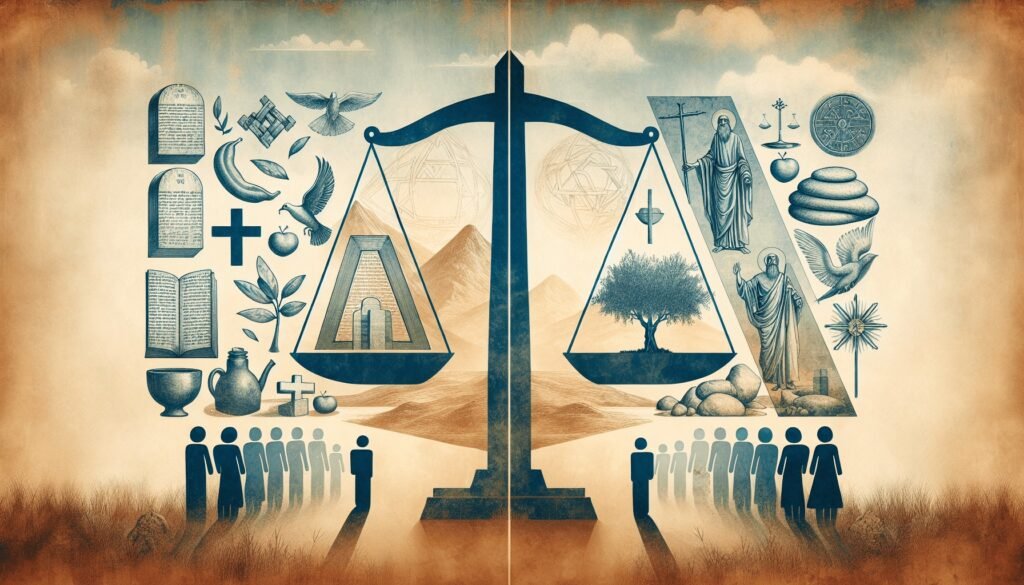Have you ever wondered about the legends that surround the Ark of the Covenant? It seems strange, doesn’t it? The way tales of a simple box have traveled through centuries, carrying with them themes of power, respect, and often, calamity. Let’s take a walk through these stories and uncover the layers behind the notion of “Humbled Nobles” in the context of exploiting the Ark.

The Legendary Ark of the Covenant
The Ark of the Covenant, a small yet majestic box described in the Bible, represents so much more than just an ancient artifact. Allegedly lost to history, its legends spark intrigue about sacredness and authority.
The Historical Context
Dating back to the Exodus of the Israelites from Egypt, the Ark contained items of divine significance, according to the scriptures. These included the tablets of the Ten Commandments, Aaron’s rod, and a pot of manna. It symbolized God’s covenant with His people, a promise filled with rich meaning and, perhaps, a bit of peril for those who wished to misuse it.
What They Did With the Ark
The Ark has seen its share of misadventures. Often associated with the Israelites’ conquests, its presence is noted in pivotal biblical battles. The most famous account is when it was carried into battle against the Philistines, a bold move that, while initially victorious, led to significant repercussions.
Humbled Nobles: The Price of Ambition
You must be asking, what does it mean to be a “humbled noble”? This phrase captures the essence of powerful figures who sought to wield the Ark’s divinity but found themselves facing dire consequences instead.
The Philistines and Their Fatal Curiosity
The Philistines captured the Ark during one fateful battle, believing it to be a powerful trophy. Instead of granting them victory, their exploitation of the Ark resulted in calamities such as plagues, turmoil, and misfortune. Imagine wielding what you thought was divine power only to be met with chaos!
- Plagues and Afflictions: Historical texts detail that the Philistines faced severe afflictions—referred to as “emerods” and rodents—leading to their eventual return of the Ark. Talk about a wakeup call!
King David’s Daring Move
Flash forward a bit, and we come across King David. Eager to unite his kingdom and take the Ark to Jerusalem, David orchestrated a parade that was both grand and hasty. Instead of solemnity, it became a spectacle.
- Second Samuel 6 recounts how, during the procession, Uzzah reached out to steady the Ark and was struck dead. David’s elation quickly turned to deep fear and reverence for the Ark. In this moment, ambition collided with divine authority, resulting in an unforgettable lesson on respect and humility.
Theological Reflections on Authority
You might find it fascinating to consider how authority, especially when linked to the Ark, carries its unique challenges and responsibilities. It begged the question: Who is truly worthy to wield such divine presence?
The Consequences of Underestimating the Divine
Nobles who disregarded the sanctity of the Ark learned that there are consequences for their actions.
- Ecclesiastical Lessons: Commandments, after all, aren’t merely laws; they are foundational guidelines meant to govern the relationship between humanity and the divine. When exploited, these laws led to calamity—not merely for the rulers but for the entire community.
The Balance of Power and Humility
A need for balance arises when discussing the authority connected to the Ark. Nobility, when faced with the divine, must cultivate a spirit of humility. This concept remains relevant today—even if it’s hidden under layers of modern political ambition and greed.
Archaeological Insights: The Search for the Ark
The search for the Ark throughout history has sparked various archaeological endeavors. As much as it’s a search for an object, it’s also a quest for understanding human nature.
Claims and Controversies
Throughout the ages, numerous claims have emerged regarding the location of the Ark—be it in Ethiopia, hidden by the Knights Templar, or even overshadowed by the ruins of Jerusalem itself. Each claim carries its own drama, igniting debates and scholarly discussions.
Analyzing Archaeological Evidence
Here’s a quick look at the most significant archaeological finds associated with the Ark:
| Artifact | Context | Significance |
|---|---|---|
| The Ten Commandments | Various archaeological sites | Offers insight into ancient law and governance |
| The Tabernacle | Associated with the Ark | Understanding its design reveals much about worship |
| The Temple of Solomon | Jerusalem | Represents the apex of Jewish worship practices |

Modern Emplications of Ancient Lessons
You may now wonder about the impact of these ancient stories in our contemporary world. The lessons gleaned from the calamities surrounding the Ark possess a striking relevance.
The Role of Leadership
In a world filled with leaders, elected and otherwise, the notion of moral authority resounds. How often do leaders tread the fine line between ambition and respect for the greater good?
Cultural Resilience
Historically, the Ark and its stories have inspired resilience and identity among communities. Lessons of responsibility and humility echo through the ages, reminding us of our shared experiences and struggles.
The Power of Storytelling
This brings us to the very heart of it all. The Ark of the Covenant serves as a central component in the larger narrative—the struggle for humanity to understand divinity, power, and their balance.
The Tradition Continues
Many cultures today still weave tales inspired by these ancient texts. The stories of humbled nobles remind us that exploitation, no matter how clever the intention, often leads to repercussions that can ripple through generations.
Connecting the Past to the Present
Through these narratives, one can connect the lessons learned from kings and commoners alike to modern situations. Remember, calamity can emerge not only from grand actions but also from small miscalculations rooted in pride and overreach.
Reflections on the Human Condition
At the end of the day, you must consider what all these tales mean for us today. The Ark and its exploitation by nobles serve as a mirror reflecting the complexities of human ambition and the need for humility in the face of greater powers.
Wisdom Passed Down
Wisdom flows through generations, and the stories we carry tell us about our persistent struggles and aspirations. They remind us that seeking divine favor is a shared journey, one that requires respect and accountability.
Summary: A Timeless Narrative
What becomes abundantly clear through the narrative surrounding the Ark of the Covenant is its power as a symbol of divine authority and human frailty. The story of humbled nobles losing their way speaks volumes about self-awareness and the consequences of one’s actions.
In the end, the relationship between authority and humility is a lesson that transcends time, offering a reflection that resonates well beyond the ancient walls of Jerusalem, continuing into the modern realm where we explore, question, and seek wisdom in our daily lives.
So, what do you think? Have our journeys through history and reflection on the past changed the way you see leadership and ambition today? The Ark’s legacy continues, urging us to ponder and engage with the narratives that shape our present and presumably, our future.


